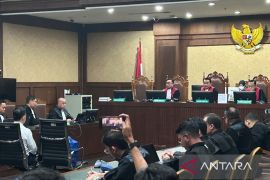The Leading Technique for Evaluation of Liver Disease
PARIS, Apr. 22 (ANTARA/PRNewswire-AsiaNet) -
On the occasion of the 46th Congress of the European Association for the Study of the Liver, the VCTE(TM) (Vibration Controlled Transient Elastography) from Echosens stood out as a leading technique in the field. It is the only technique able to measure elasticity at a predetermined, controlled frequency (50 Hz), which is essential because elasticity increases as frequency increases.
Today, liver elasticity is recognized as an indicator of liver problems due to its link to fibrosis and cirrhosis, as well as other factors such as portal hypertension, inflammation, congestion, and cholestasia, which arise from chronic liver disease.
FibroScan(R)502 Touch:
The FibroScan(R)502, which allows non-invasive, quantitative measurement of liver fibrosis, has undergone development and is now available in a "Touchscreen" version.
- New touchscreen interface is more ergonomic and user-friendly,
- Faster examinations, with one-third the acquisition time,
- Better patient file management,
- Complete personalized examination reports,
- Recommendations for which probe to use (M or XL)
Desk Solution:
The new reporting software and exam management is easy to use. You can export FibroScan(R) data, manage data for each patient, guarantee better visualization of the examination results, and re-read elastograms on the physician's computer.
CAP(TM) (Controlled Attenuation Parameter)
Adapted for the FibroScan(R), this innovation precisely quantifies the steatosis. Incidences of metabolic diseases (type 2 diabetes, obesity) are rapidly increasing across the globe. They cause complications including non-alcoholic steatohepatitis. Steatosis can also be alcohol induced.
This CAP parameter will become the standard in detection and quantification of steatosis. During this Congress, Professor Victor de Lédinghen (University Medical Center of Bordeaux) presented the results of a long-term study to validate CAP(TM), measured using the FibroScan(R). The study involved 112 patients undergoing a liver biopsy as part of management of a chronic disease (36% hepatitis C, 4% hepatitis B, 5% alcohol abuse, 25% NAFLD, 30% other). It demonstrates the superiority of CAP(TM) compared to the SteatoTest(R) or the Fatty Liver Index score (which are based on biological and clinical parameters).
SOURCE: Echosens
Reporter: Adityawarman
Editor: PR Wire
Copyright © ANTARA 2011











